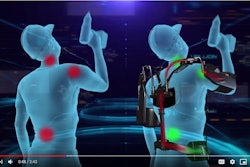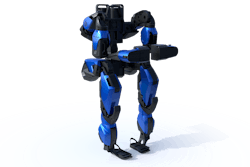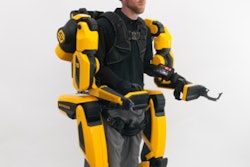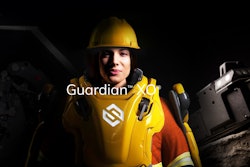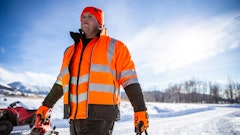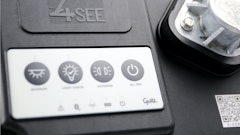The physical demands of repetitive overhead work takes a toll on workers that exoskeleton innovators have been working hard to address in recent years.
Some workers on a Ford assembly line lift their arms an average of 4,600 times per day, or about 1 million times per year. Shoulder injuries are not only Ford workers’ most frequent joint injuries, but they’re also the type of injury that requires the longest recovery time. As a result, shoulder injuries are the automaker’s most costly worker-injury issue.
That’s where the EksoVest comes in. Ford and Ekso Bionics partnered to explore how the company’s upper body exoskeleton that elevates and supports a worker’s arms can help.
Each EksoVest costs about $6,500. Despite the exoskeleton’s techie-sounding name, the EksoVest is all mechanical. Springs provide the arm assist. It makes for a relatively simple, light-weight device without the limitations inherent if a power source was necessary.
Primary tools used with the vest vary by application including applications that use no tools at all — just manipulating parts with their hands while overhead. It’s optimized to support the weight of the worker’s arms so that any overhead work puts less of a strain on the worker’s shoulders and arms. The vest provides 5 lb. to 15 lb. of lift assistance per arm when the springs are activated. As a result, the worker will get a noticeable level of support for overhead tasks that require either no tools at all or tasks requiring tools that weigh up to approximately 8 lb.
By reducing the strain on a worker’s body, he/she not only feels better at the end of every day, it also reduces the likelihood that the worker will sustain injury. Jobs get completed to a higher level of quality, in a shorter amount of time.
“Collaboratively working with Ford enabled us to test and refine early prototypes of the EksoVest based on insights directly from their production line workers,” Russ Angold, co-founder and CTO of Ekso Bionics. “The end result is a wearable tool that reduces the strain on a worker’s body, reducing the likelihood of injury, and helping them feel better at the end of the day – increasing both productivity and morale. The EksoVest is now ready to help workers around the world.”
Ford initially partnered with EksoWorks to test four of the EksoVests in two U.S. plants starting in May of 2017. As a result, use of the EksoVest will be expanded to plants in other regions, including Europe and South America.More on industrial exoskeletons:




